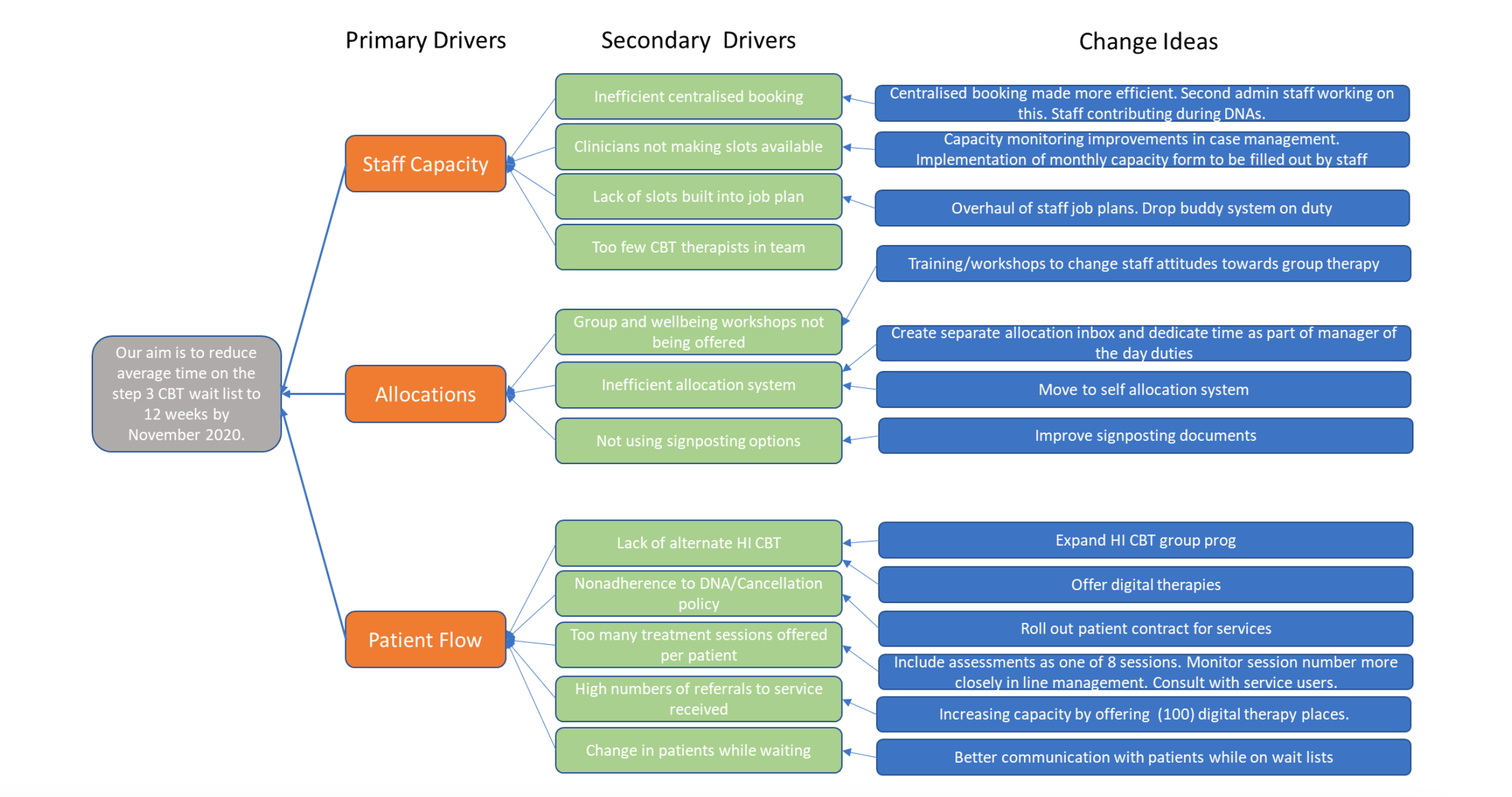Start improving with Life QI today
Full access to all Life QI features and a support team excited to help you. Quality improvement has never been easier.

Organisation already using Life QI?
Sign-up

In this blog we’re going to be drilling down more deeply into the benefits of using driver diagrams. We'll also see how this can help your quality improvement (QI) team. In the last article, we looked at how and when to use a driver diagram in your quality improvement project. Described as illustrating a ‘theory of change’, driver diagrams can be used to plan improvement project activities’. There are many benefits to using driver diagrams which we’ll take a look at here.
One of the main benefits of the driver diagram in the QI environment is the fact that it helps people to engage with a change idea and how they can drive change. A key element of developing the driver diagram can be a brainstorming session.
Described as ‘idea generation or coming up with lots of new ideas. Brainstorming can be used at any time when new solutions to an identified problem are required.’ Brainstorming can help sort ideas in order of importance and potential impact. For example, what was believed to be a secondary driver at a brainstorming meeting at the start of a project may later be designated as a primary driver after reviewing data or experience in the field.
The Institute for Healthcare Improvement (IHI) recommends brainstorming in part of its ‘Quality Improvement Essentials Toolkit’ and you can read more about brainstorming QI ideas in our blog.
NHS Scotland recommend that you bring together the subject matter experts and carry out the following steps. ‘Ask the group to “brainstorm” the following question and record their thoughts on post-it notes: “To achieve our aim the things we need to change are…….” Teams can then carry out the following steps to progress:
One of the main reasons that driver diagrams are used so widely in improvement, is that they are able to represent and communicate highly complex strategies in a visual manner. NHS Education for Scotland describe the benefits here:
ELFT QI team state: ‘A driver diagram illustrates a ‘theory of change’, that can be used to plan improvement project activities. This technique provides a way of systematically laying out aspects of an improvement project so they can be discussed and agreed on collaboratively by the project team.’
Take a look at this example from ELFT. They have used a driver diagram very effectively to tackle a complex strategy.

Figure 1: Driver Diagram from ELFT (Source)
As driver diagrams are best created with a team - and earlier on in your QI project - it means they can be helpful for discussing, deconstructing and solving complex problems that may arise.
You can refine your driver diagram and use it as a key discussion point at your project meetings, and also measure and test changes.
NHS Scotland suggest that teams can sometimes ‘work backwards’ in their driver diagrams and from their change ideas to develop their change theory and work out complex problems. By asking questions about how changes will affect the way the system is working, this can help people think through and work out answers.
The NHS England and NHS Improvement ‘Online library of Quality, Service Improvement and Redesign tools’ report on driver diagrams advises that the QI lead collect together a group of people to talk about the ‘the different aspects of the improvement topic (i.e. subject matter experts). Ask them to brainstorm potential drivers (i.e. the areas where improvement is needed). Team members should then ‘cluster’ the ideas in order to create an agreed set of drivers'.
This supports the theory that ‘Improvement can be complex and multifaceted and often we need to look at a problem from different perspectives before one of many different solutions can be found.’ You can read more about driver diagrams and how they work and the benefits they have.
As we know, driver diagram creation is most effective if developed by a team at the early planning stages of a project, and then used regularly throughout the project life cycle and updated as required. As the QI group contributes to the different level of drivers and change ideas, there is greater team engagement.
Driver diagrams also help you to share success. They enable teams to celebrate and recognise improvements as you are working through your project.
The Institute for Healthcare Improvement’s (IHI) ‘Improving Joy in Work’ framework also sets out how you can recognise QI teams’ efforts. East London Foundation Trust (ELFT) regularly celebrate improvement journeys with regular events to help share their QI journeys.
QI teams acknowledge the power of recognition and reward - you might also want to take a look at our article ‘Reward and recognition as motivators in healthcare’ where we focus on what you can do to recognise and celebrate improvements during your project.
However, if you are using driver diagrams to support you on your QI journey – whether sharing successes or deconstructing complex problems - it may be a good idea to have a software solution that helps you monitor your progress. Solutions such as Life QI can really help. And indeed, QI teams such as those at East London Foundation Trust use Life QI to create their driver diagrams online with great success.
Full access to all Life QI features and a support team excited to help you. Quality improvement has never been easier.

Organisation already using Life QI?
Sign-up